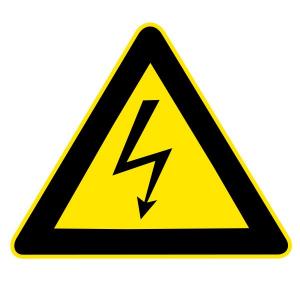The unique art of tokamak grounding—part II
10 Dec 2010
-
Keith Armstrong, Cherry Cloough Consultants
In last week's Newsline we reported about the recent workshop on earthing and electromagnetic compatibility (EMC) design for ITER. For the article we interviewed one of the participants, the UK expert on electromagnetic compatibility and functional safety, Keith Armstrong of Cherry Clough Consultants, but unfortunately the recorder failed to record the interview. Welcome to the machine!
So we asked Keith to repeat what he had said about the importance of grounding ITER:
Keith Armstrong: "ITER is much larger than any previous tokamak, so the common technique of using insulation breaks, used by previous tokamaks, would have to handle much higher voltages, making them very much more costly— and significantly increasing the safety problems."
"ITER has to operate in fusion mode for many seconds, even minutes, when previous tokamaks only had to operate for a second or so. So interference with its measurement and control systems needs to be lower. ITER is more like an industrial product, that has to reliably do a job of work, than a scientific experiment that only has to prove or disprove a theory!"
"To deal with these issues whilst also improving safety and reducing the cost—as well as for other more technical reasons that I don't understand—the design of ITER is different than what has gone before. It will be based on a 'low-impedance' tokamak."
"A 'low-impedance' tokamak has a very low-resistance vacuum vessel, and ITER's is nearly 1,000 times less resistive than Tore Supra, for example. It also closely 'meshing-bonds' all of its metalwork—including the reinforcing bars in its concrete walls and floors. This will allow us to avoid using most of the costly insulation breaks, while also reducing the noise in the signals and increasing safety."
"A 'low-impedance' tokamak has a very low-resistance vacuum vessel, and ITER's is nearly 1,000 times less resistive than Tore Supra, for example. It also closely 'meshing-bonds' all of its metalwork—including the reinforcing bars in its concrete walls and floors. This will allow us to avoid using most of the costly insulation breaks, while also reducing the noise in the signals and increasing safety."
"Of course, the metalwork will not be meshed in the area in which the resulting current loops might disturb the plasma! But this area won't have any poeple in it anyway, because it is too close to the vacuum vessel and so too radioactive. The 'mesh-common-bonding' technique proposed for ITER has been widely used for decades in other industrial applications, including those that use high levels of magnetic field that fluctuate as much, if not more, than ITER's will. So it's not a risky or untried technique—in fact IEC good-practice guidelines recommending it for controlling interference were first published in 1997!"
"When we use mesh-bonding in other installations, their users are usually very surprised by how much better their signal quality is! They expected not to have gross interferences, but they hadn't expected to get much better signal quality all the time. So I am confident that ITER's 'low impedance' design will allow researchers to discover new things and achieve better control."
"Hopefully, this new approach to tokamaks will speed the day when fusion power is so common that we no longer have to overheat our world by burning fossil fuels."


